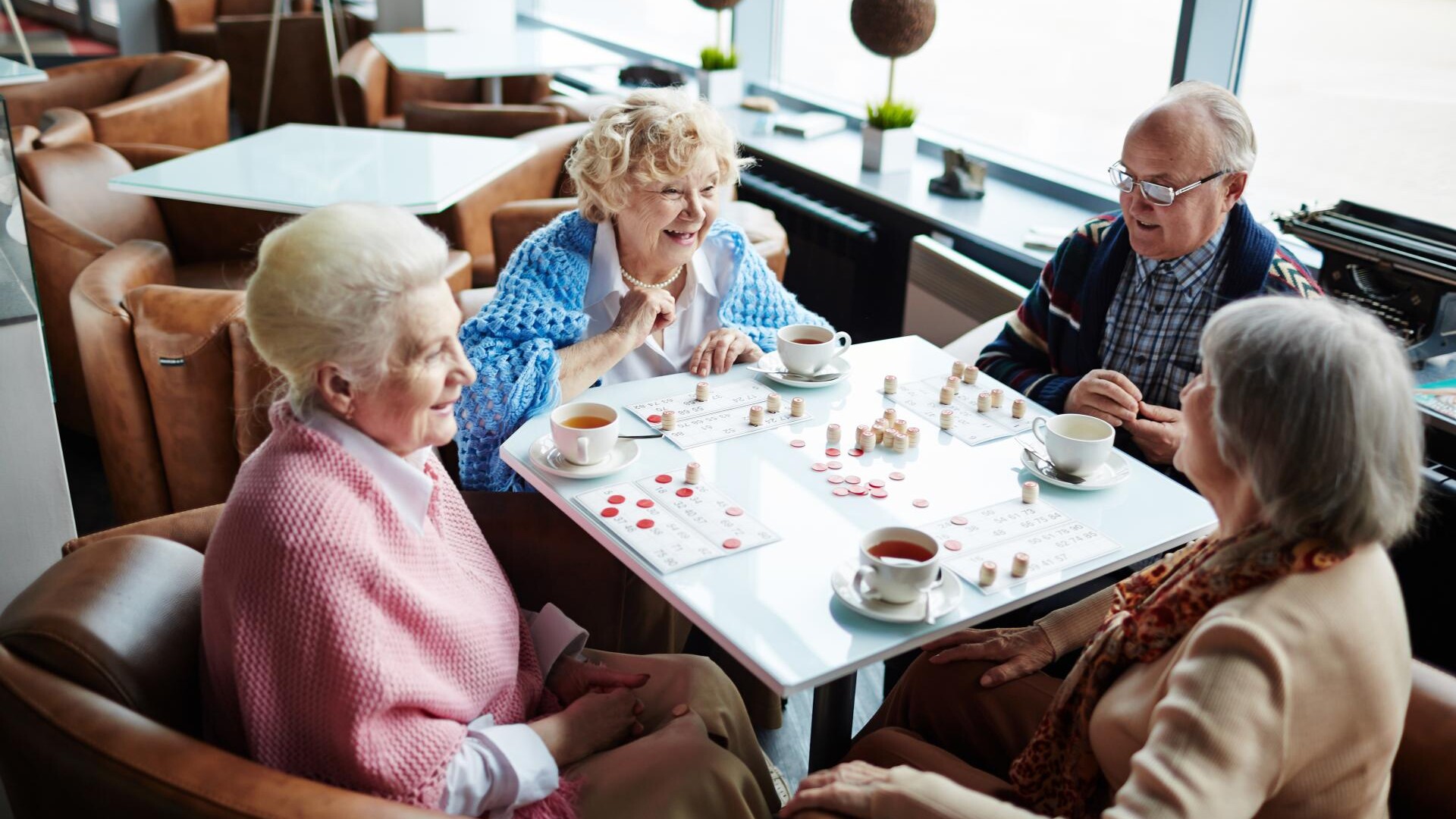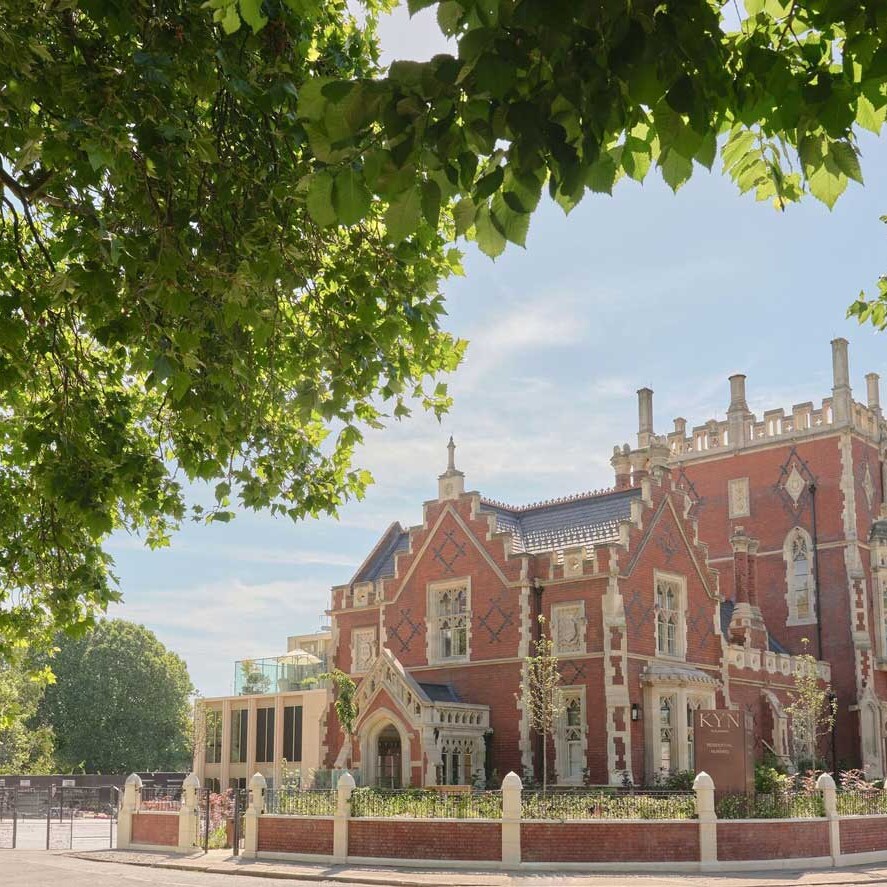In our recent White Paper we discussed how the design of a care home, care village or supported living accommodation […]
In our recent White Paper we discussed how the design of a care home, care village or supported living accommodation facility impacts perception. When viewing potential future homes for later life living, one of the main areas of focus is the provision and use of communal space to help combat isolation and loneliness and build friendships and community. It has been shown that these negative factors often contribute to ill health and exacerbate any existing health issues.
The design, layout and use of communal space has huge importance and the positive design can bring massive benefits to residents. It can be used as a social space for conversations, an area where residents can relax and welcome guests. Depending on the user group – dementia residents, nursing or residential care – this may require separate communal areas and there should be a communal living space on each floor if the building is greater than one storey. Activity rooms and quiet rooms are designed as additional space and, where possible, should not be included in the communal space allowance of a care home. Similarly, communal areas can be split into living and dining. In this blog we are discussing living communal spaces only. The communal space can provide a focus for a resident’s day and encourage them to leave their bedrooms to meet with others to engage and to have a purpose. Understanding the user groups needs from the space and providing the flexibility is key to support and enable independence, privacy and choice.
As defined by the CQC (Care Quality Commission), the total communal space per resident must be a minimum of 4.1m² for all new build care homes and first registrations. Generally, for all new build homes Carless + Adams design on the basis of a minimum 5m² per resident to ensure more than adequate communal space is provided. The ultimate goal is for residents to feel comfortable and at home, not squashed and lacking personal space! The 5m² would normally be a sum of 2m² for dining area and 3m² for lounge area, per resident. This is also the case when extending a home as the new rooms need to meet modern care home standards as defined by the CQC. Therefore, the size of the communal space depends on the number of bedrooms within the care home and the number of residents living there. Communal space cannot be taken away from an existing home but existing bedrooms can be converted into communal space as long as the area available per resident is not diminished. When considering the size of these spaces it is also important to ensure that travel distances set out in Part B of the building regulations are considered. Care homes are built to allow for progressive horizontal evacuation in case of a fire, which involves splitting the building in to separate compartments, providing areas of safety.
Design of a care home or care village focusses on the flow of movement, encouraging independence of residents and providing them with a choice, safety of residents and staff and subtle, often unnoticed features. The communal area should be the heart of the home that connects all residents together. The space should have a flexibility in its design and layout to accommodate a variety of activities, reading, watching tv, card games and social interaction to name a few. Interaction with the Care Homes pet is often the highlight of the day.
The lounge area becomes the living room of an everyday house, it adapts/should adapt to the quantum of people in it over the course of day, enabling a private cup of tea between a resident and there guest or a social game of dominoes.
Design doesn’t end at the building structure. Carless + Adams work with interior designers from the outset to ensure that the intended domestic, rather than institutional, environment is achieved. We think about how the room will be used rather than just try to achieve the floor area per resident. In addition we consider potential health constraints of residents when designing.
Zoning of the communal space allows for flexibility in the use of the room and choice of care furniture ensures these zones are welcoming, and do not make the area feel institutionalised. There are functional elements to a communal space that must be included in or located adjacent to, and design can help integrate them into the space without intrusion. Hoist stores, furniture stores, kitchenettes and nurse stations could be clinical if they were not considered in the initial design. For staff, communal space is designed to assist them in their work by having the safety of all residents in one visible space – it doesn’t need to be one massive room, private nooks can be made with one viewing location pinpointed to ensure that a staff member can see all residents wherever they maybe stood.
Interior designers work their magic through the use of colours, layout of furniture, positioning of tvs, zoning of areas and the creation of a homely feel. There will not be any physical or visual barriers made, especially in communal areas, to ensure that residents feel comfortable in their new home. Preliminary room layouts are shown to Carless + Adams architects who designed the scheme and also the technicians at an early stage for their input. By working together as one team, Carless + Adams is able to add value at every stage of the design and build.
Lighting impacts individuals and can alter mood. Lighting is designed to ensure that the main areas give appropriate lux levels and that accent lighting emphasizes features to help create a positive mood. Carless + Adams architects coordinate with such elements as ceiling plans to ensure the concepts are followed through and work in detail with interior designers to achieve this. Service voids and floor-to-ceiling heights are considered at design stage and appropriate lighting advised.
The view from the communal area is hugely important to stimulate interest and providing fresh air. A view out to the gardens is always desirable, however having a loading bay or drop off point in view may not seem inspirational, but can often provide moments of unexpected interest! The windows need to provide sufficient visual access to the outside without being too large an expanse of glazing to avoid overheating issues. If bi-fold doors are used to provide level access to outside space, they should also have openable windows when the doors are closed to provide fresh air.
Views to landscaping has huge benefits to residents. Having access to nature is significant. Outside residents are stimulated the most with the sights, smells, sounds, plus wander routes that encourage mobility, meeting places with other residents or to welcome family members, plus the provision of focal points of interest such as high-level digging beds to encourage interaction and mental stimulation. The landscaping design will encourage residents to be active and welcome guests through sensitivity placed seating areas for privacy and play areas for children. Intergenerational spaces have a positive influence on the residents wellbeing and provide a positive mindset, which is something we discussed in an earlier blog.
From a design perspective, access to outside space considers some safety features too. If the outside space is above the first floor, then balconies will be designed to have glazing of a minimum of 1.8m balustrading, higher than the standard 1.1m with no handrail. This is to prevent any vulnerable residents from potential climbing or falling. Fire escapes from outside terraces need to be a maximum of 11m from the furthers corner to the door. Seating should not be designed in an area of direct sunlight with trees providing natural shade or terrace overhangs designed to provide manmade shade for residents.
When viewing a care home, care village or supported living accommodation facility with the intention of finding a new home, after the reception, the first area visited is often the communal room. Being able to see happy, engaged and motivated residents would be a motivating deciding factor, wanting to stay for a cup of tea and actively engage. This can be created simply by the considerate design of the communal room in order to focus on the ultimate goal of benefitting the residents. Carless + Adams does not design to the minimum standard and challenge the norm of what is expected in a care home. This is not what people want, or deserve, in their later life. When choosing care, people should be provided with the space needed to live their best possible lives.


